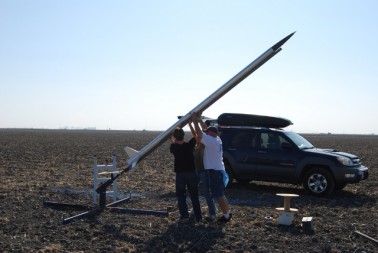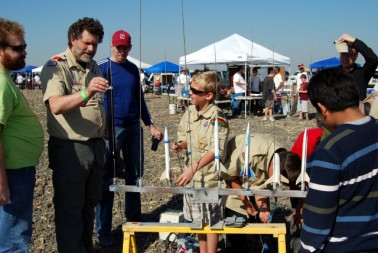QUEST series producer Amy Miller contributed the following text to this story.
When QUEST first started production on the television story, “Amateur Rocketeers Reach for the Stars”, I had no idea that the amateur or experimental rocketry was so popular today. Before the producer of the story, Chris Bauer, pitched the idea, if someone had mentioned rocket-building to me, I probably would have imagined a young boy putting together a cardboard rocket and propelling it into the sky with some baking soda and vinegar.

I certainly would not have conjured the images of high school students (boys AND girls) working in a lab together for weeks on end to design, build and program rockets that can reach the edges of space in order to do real scientific research. This is exactly what the some of the folks featured in Chris’s story are doing with the Rocket Mavericks program.
The official name of the organization is Mavericks Civilian Space Foundation and on the spectrum of civilian rocket building, they are all the way to the hard-core technical end. According to their website, the group strives “to enable the common man to build vehicles and conduct space exploration missions independently, launching the personalization of access to space.”
One of the main things that Rocket Mavericks director Tom Atchison is focused on is creating the next generation of rocket scientists by establishing the Explorers Program in high schools in order to inspire students to pursue STEM (science, technology, engineering and math) disciplines and careers. And from the looks of concentration and excitement on the faces of the kids who are featured in our story, there’s no doubt that Atchison is succeeding in his mission to inspire these kids through rocketry.
